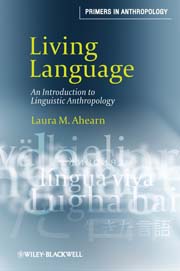
Accessible and clearly written, Living Language: An Introduction to Linguistic Anthropology introduces readers to the study of language in real-life socialcontexts around the world through the contemporary theory and practice of linguistic anthropology. A highly accessible introduction to the study of language in real-life social contexts around the world Combines classic studies on language and cutting-edge contemporary scholarship and assumes no prior knowledge in linguistics or anthropology Provides a unifying synthesis of current research and considers future directions for the field Covers key topics such as: language and gender, race, and ethnicity; language acquisition and socialization in children and adults; language death and revitalization; performance; language and thought; literacy practices; and multilingualism and globalization INDICE: Preface. Acknowledgments. PART ONE: LANGUAGE SOME BASIC QUESTIONS.1. Introduction: The Socially Charged Life of Language. 2. The Research Process in Linguistic Anthropology. 3. Language Acquisition and Socialization. 4. Language, Thought, and Culture. PART TWO: COMMUNITIES OF SPEAKERS, HEARERS, READERS, AND WRITERS. 5. Communities of Language Users. 6. Multilingualism in Globalization. 7. Literacy Practices. 8. Performance, Performativity, and the Constitution of Communities. PART THREE: LANGUAGE, POWER, AND SOCIAL DIFFERENTIATION. 9. Language and Gender. 10. Language, Race, and Ethnicity. 11. Language Death and Revitalization. 12. Conclusion: Language, Power, and Agency. References Cited.
- ISBN: 978-1-4051-2441-6
- Editorial: Wiley-Blackwell
- Encuadernacion: Rústica
- Páginas: 368
- Fecha Publicación: 22/04/2011
- Nº Volúmenes: 1
- Idioma: Inglés
